The Trinity Knot, a captivating symbol steeped in history and rich with meaning, has been a source of wonder and inspiration across various cultures for centuries. With its roots in ancient civilizations, this elegant motif has evolved through time, adapting to different belief systems and artistic styles. Join us on a journey to unravel the enigmatic beauty of the Trinity Knot, as we delve into its origins, meanings, and profound impact on art, fashion, and spirituality.
Key Takeaways
The Trinity Knot is a symbol of interconnectedness, unity and eternity with spiritual connotations.
The intricate design has captivated viewers for centuries, transcending cultural boundaries in modern culture through jewelry and tattoos.
Representing love and commitment, the Trinity Knot also serves as an emblem of Celtic heritage connecting generations together.
The Trinity Knot’s Beginnings: Tracing Back to Ancient Times
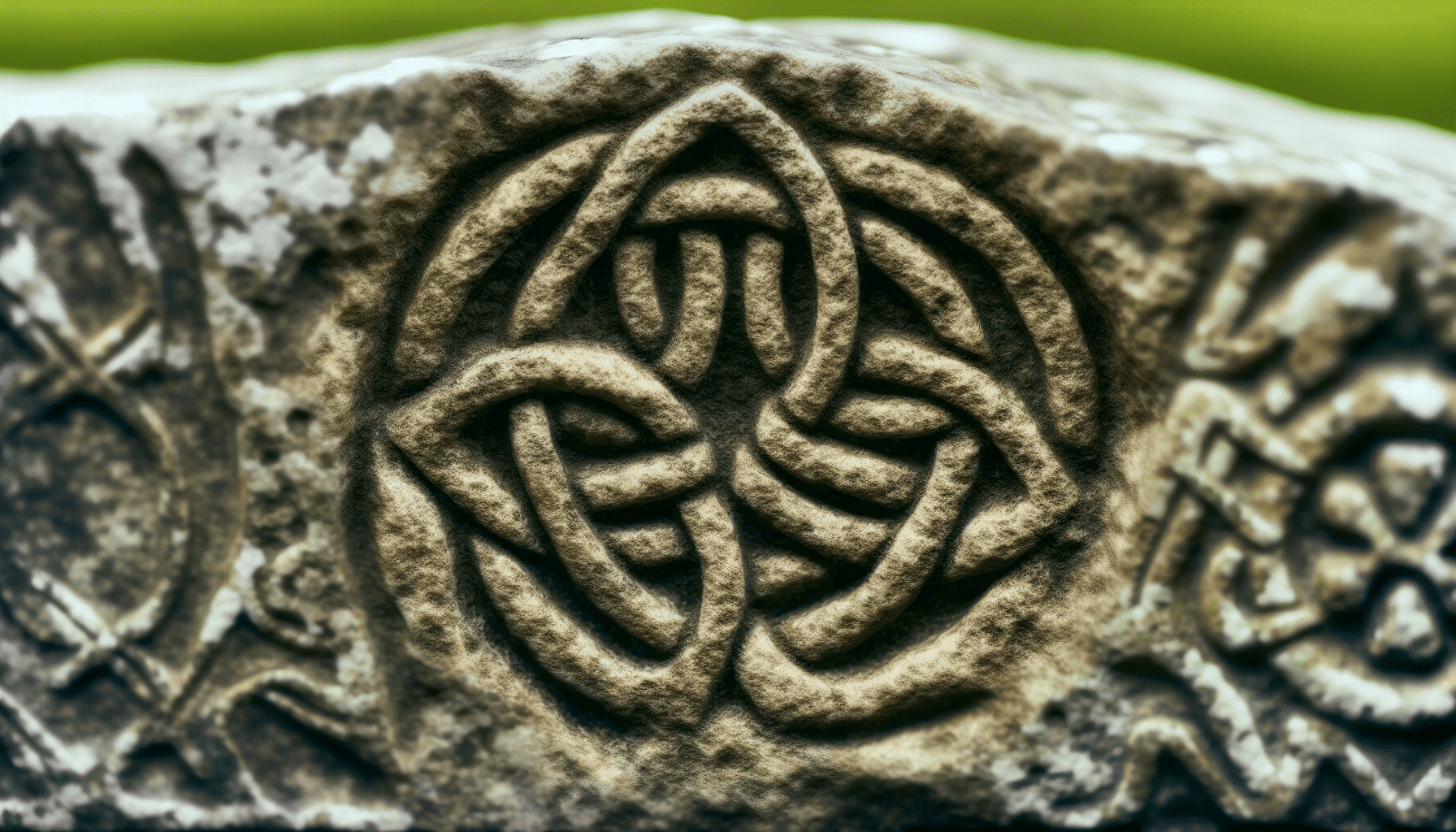
The origins of the Trinity Knot can be traced back to ancient times, with its presence in various cultures and artifacts. The Celtic Trinity Knot, believed to predate Christianity by hundreds of years, is found as an ornamental motif on Celtic artifacts and early Celtic Christian relics from the 7th to 10th century. Examples of such ancient artifacts include the Book of Kells, the Book of Durrow, and the Killaghtee Cross, all of which feature at least one Trinity Knot. The ancient Celts embraced the Celtic Knot, specifically the Trinity Knot, as an emblem. It represented the three phases of life – youth, adulthood and old age. Celtic knots, such as the Trinity Knot, continue to be a symbol of the rich history and culture of the ancient Celts.
While the exact meaning of the Trinity Knot, a Celtic symbol, to the ancient Celts remains uncertain, its presence in various forms can be observed across cultures and time periods, showcasing the influence of Celtic symbolism. The Triquetra, a symbol associated with unity, protection, and everlasting life, can be found in the ancient pages of the Book of Kells at Trinity College Dublin. Historians have also discovered the Trinity Knot on Indian heritage sites that are over 5,000 years old, on carved stones in Northern Europe dating from the 8th century AD, and on early Germanic coins.
The Essence of the Trinity Knot: Interpreting Its Core Meanings
At the heart of the Trinity Knot lies a deep-rooted symbolism, reflecting various aspects of life’s journey and spiritual dimensions. We will examine how the Trinity Knot symbolizes the interconnectedness of the past, present, and future, along with its representation of the Christian Holy Trinity.
Life’s Journey: Past, Present, and Future
The Trinity Knot, with its three interconnected points, acts as a symbol of the interconnectedness of the past, present, and future. Ancient Celts thought it represented the three stages of life – youth, adulthood, and old age. This timeless design has since been adapted by various belief systems and cultures to signify the eternal bond between generations and the cyclical nature of life.
In the context of love and relationships, the Trinity Knot is often used as a symbol of commitment, with its continuous line representing the unending connection between the past, present, and future. Whether it is used as a token of affection, a family heirloom, or a personal emblem of growth, the trinity knot meaning is a symbolic reminder of life’s ever-evolving journey and its various trinity knot meanings.
Spiritual Dimensions: Father, Son, and Holy Spirit
Beyond symbolizing life’s journey, the Trinity Knot also has spiritual significance, especially within the Christian faith. Widely acknowledged as a symbol of the Christian Holy Trinity, the Trinity Knot represents the Father, Son, and Holy Spirit. This connection to spirituality has been utilized as a powerful visual representation of faith, transcending cultural and religious boundaries.
The Trinity Knot’s association with the Holy Trinity is not only limited to Christianity. The Triquetra, a trinity symbol closely related to the Trinity Knot, has been used as an educational aid to illustrate the concept of the Holy Trinity in Christian teachings. The universality of the Trinity Knot as a spiritual symbol is a testament to its enduring appeal and profound impact on the human experience.
The Artistry of Celtic Knotwork: Aesthetic and Symbolism
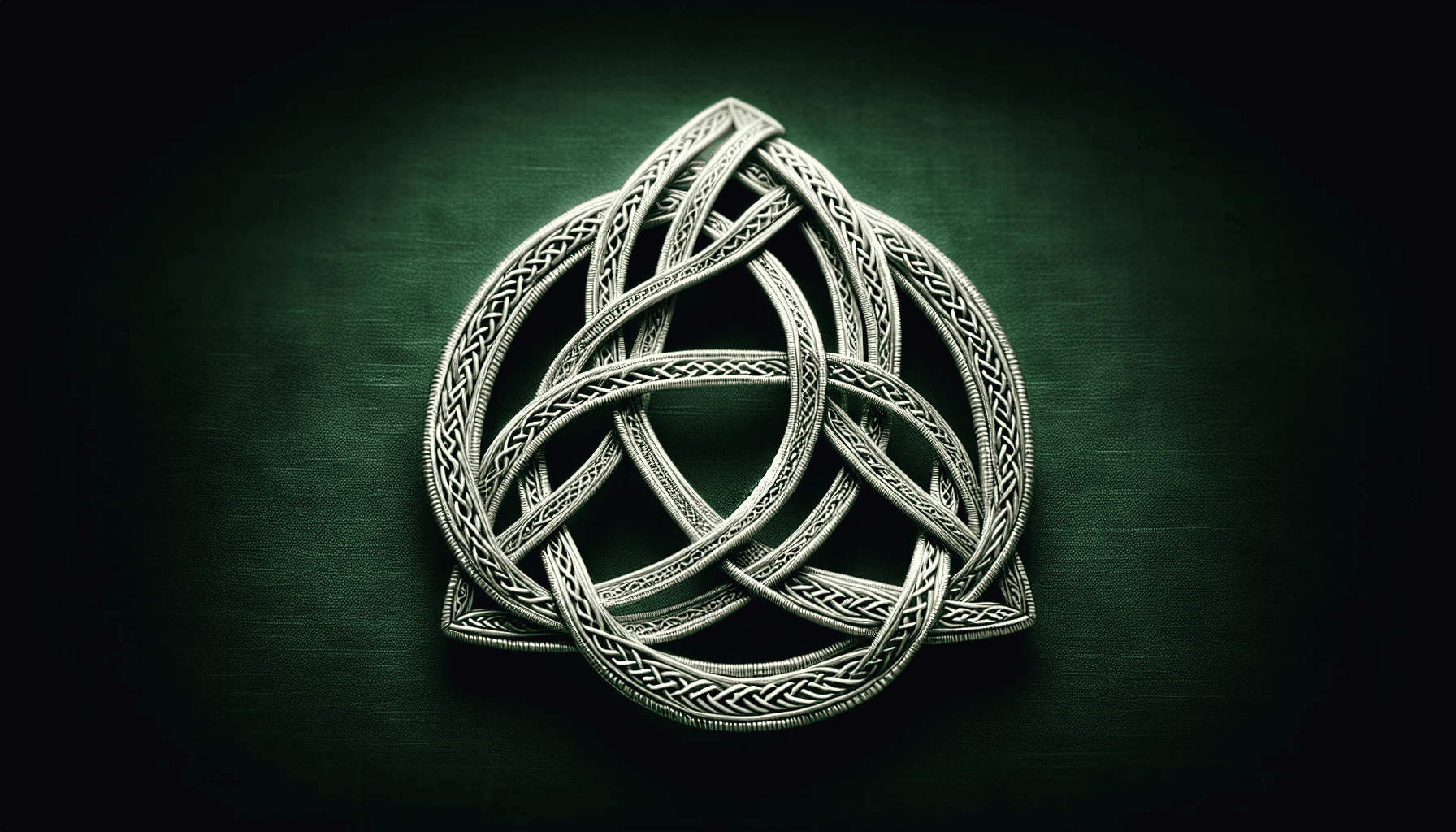
Celtic knotwork, with its intricate patterns and intertwining designs, has captivated the hearts and minds of artists and admirers for centuries. The Trinity Knot, one of the most basic yet enduring knots in Celtic knotwork, is a prime example of this mesmerizing art form. Its presence in various artistic mediums, from:
carved stone
woodwork
jewelry
other decorative pieces
Showcases the versatility and timeless appeal of this ancient symbol.
The aesthetic and symbolic facets of the Trinity Knot are deeply interlinked, its continuous design signifies the unity of three elements or concepts. From the Holy Trinity in Christianity to the cycle of birth, life, and death in Celtic beliefs, the Trinity Knot has served as a potent symbol of eternity, spirituality, and interconnectedness throughout history. This multifaceted symbolism has made the Trinity Knot a cherished emblem in Celtic art and beyond.
The Trinity Knot in Modern Culture: From Jewelry to Pop Culture
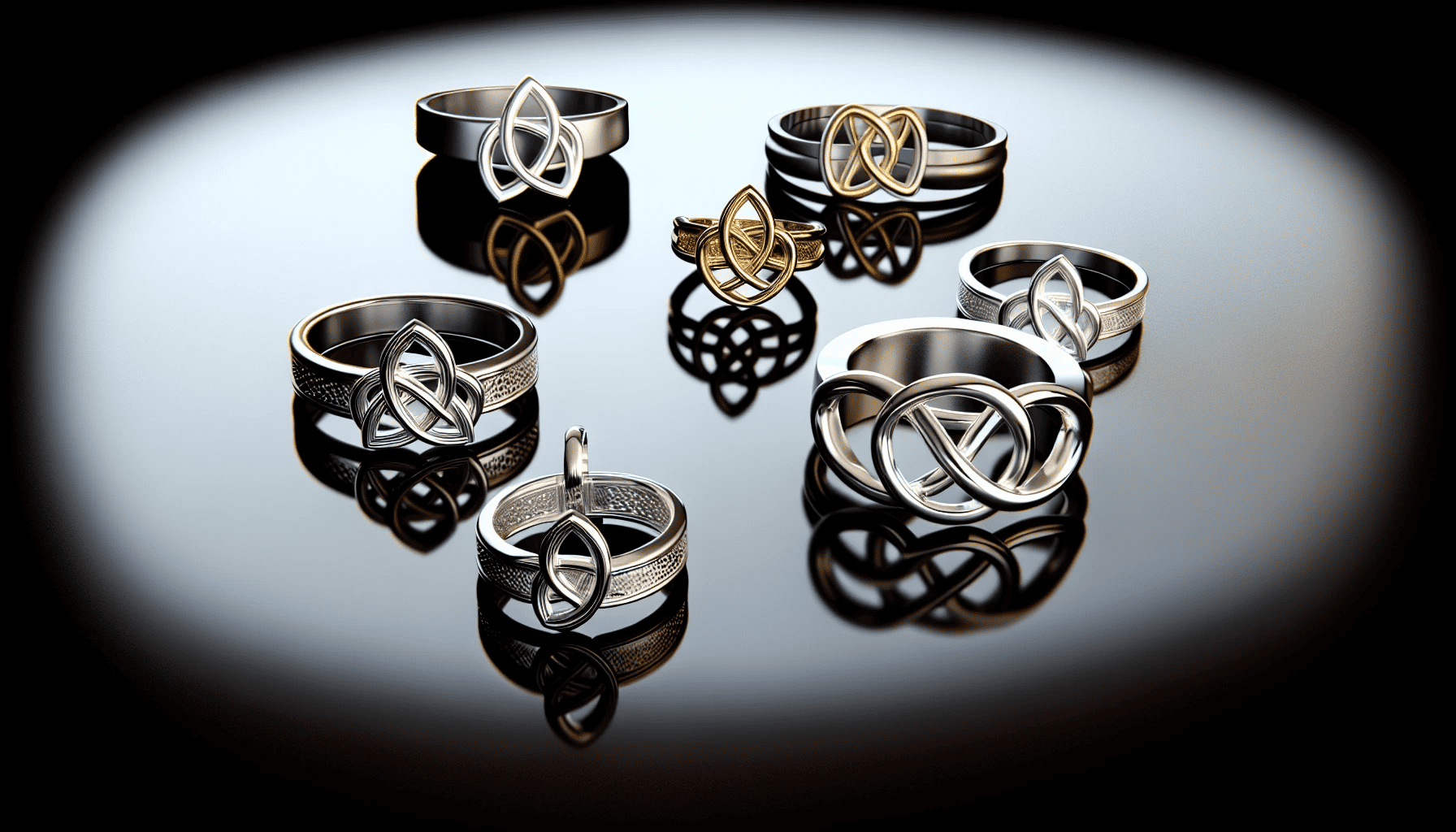
The timeless appeal of the Trinity Knot extends beyond the borders of ancient history and art, leaving a significant mark on modern jewelry, tattoos, and popular culture. Its intricate design and symbolic meanings have made it a popular choice for tattoos, with the Triquetra being one of the most widespread Celtic symbols in contemporary tattoos. The Trinity Knot has also found its way into the world of television, such as its presence on the ‘Book of Shadows’ in the popular 1990s television program Charmed, which focuses on three sisters with supernatural abilities.
In the realm of jewelry and fashion, the Trinity Knot has become a celebrated emblem representing eternity and everlasting love. From Claddaghs and engagement rings to pendants and other accessories, the Trinity Knot is often incorporated into designs as a symbol of affection and commitment. Its widespread presence in modern culture serves as a testament to the enduring appeal and charm of this ancient symbol.
The Trinity Knot Enclosed: Circles and Beyond
Enclosing the Trinity Knot within a circle or other shapes serves to emphasize its symbolic meanings of unity and eternity. The encompassed circle denotes the concept of eternity, while the Trinity Knot itself represents the interconnectedness of three elements or concepts. This symbolism has been utilized in Celtic and Christian traditions for centuries, with the enclosed Trinity Knot serving as a potent reminder of the eternal bond that unites all things.
The Trinity Knot, also known as the triquetra symbol, has various interpretations that can be affected by the shape that encloses it. For instance, the Triquetra enclosed within the vesicae piscis, a shape created by the intersection of two circles, can symbolize the unity of opposites or the balance between opposing forces. The versatility of the Trinity Knot and its ability to adapt to various enclosing shapes highlights the depth and complexity of its meanings, making it an enduring symbol of interconnectedness and eternity.
The Trinity Knot Across Cultures: A Universal Symbol?
The global symbolism of the Trinity Knot is apparent in its presence across diverse cultures and belief systems worldwide. While strongly associated with Celtic and Norse cultures, the Trinity Knot is known to share similar meanings with other symbols in different cultures, such as:
The Aztec Calendar Stone
The Native American dreamcatcher
The Ankh of Ancient Egypt
The Yin-Yang of Chinese culture
The Trinity Knot’s universal appeal can be attributed to its timeless design and profound symbolism, representing eternal life, interconnectedness, and the unity of opposites. Its ability to transcend cultural and religious boundaries demonstrates the enduring power of the Trinity Knot as a symbol that resonates with the human experience across generations and geographical borders.
The Sylvan Trinity Knot: Nature’s Reflection in Design
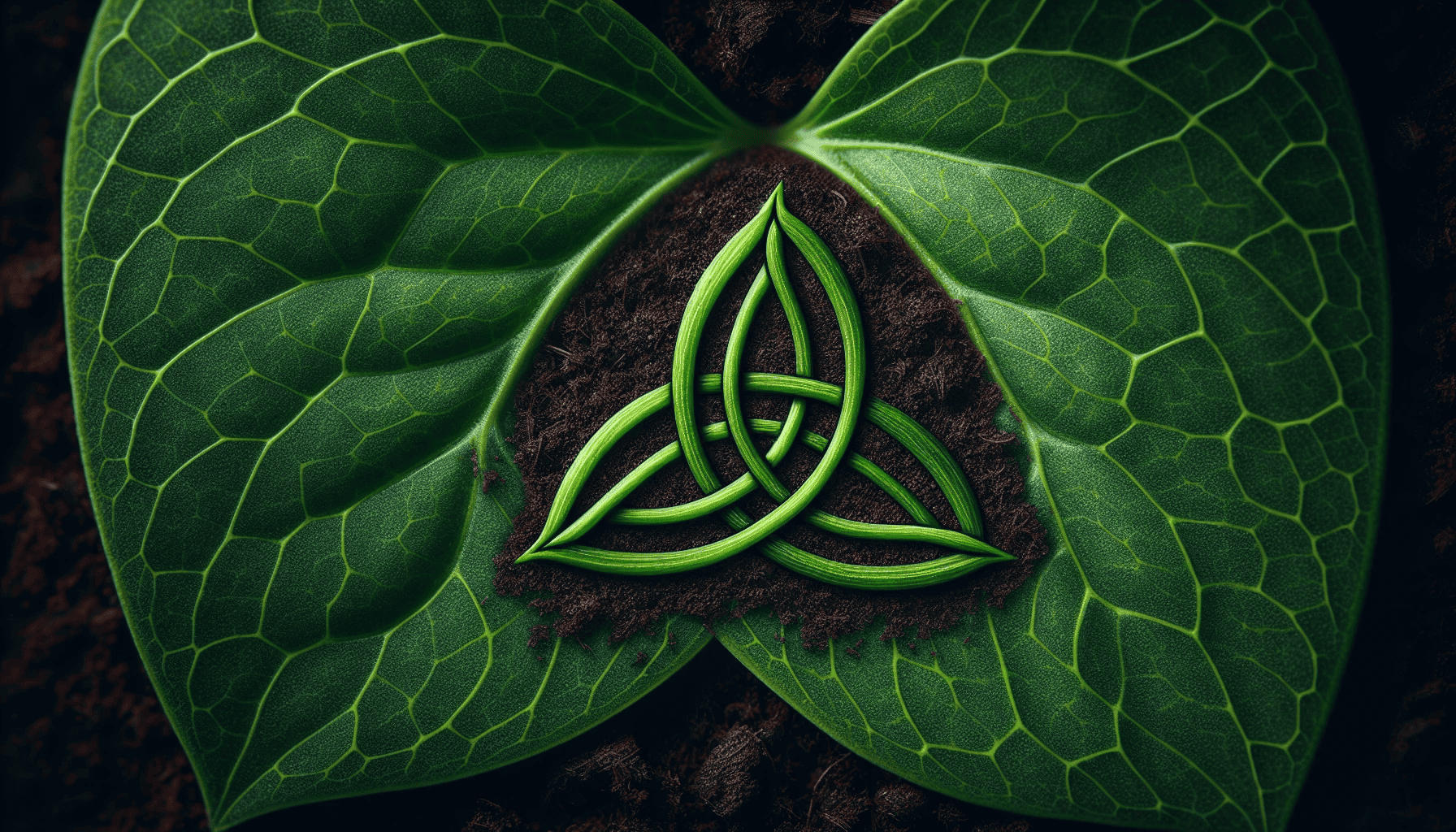
The connection between the Trinity Knot and nature is beautifully illustrated in the Sylvan Trinity Knot, an impressive example of woodland art planted by the McCabe family in the 1980s in County Sligo, Ireland. Visible from the N16 Sligo to Manorhamilton road, this stunning piece of living art is situated on the slopes of the Tomór mountain, showcasing the intricate design of the Trinity Knot on a grand scale.
The Sylvan Trinity Knot:
Serves as a testament to the enduring relationship between the Trinity Knot and the natural world
Its design is inspired by nature and ancient Irish art
Reflects the interconnected forces of the natural world
Represents the timeless beauty and elegance of the Trinity Knot
This unique example of woodland art serves as a reminder of the deep-rooted connection between the Trinity Knot and the natural world that surrounds us.
Wearing the Trinity: Fashion and Identity
The influence of the Trinity Knot on fashion and personal identity is visible through its extensive presence in jewelry, clothing, and accessories. Its intricate design and rich symbolism make it an attractive choice for those seeking to express their identity, cultural heritage, or personal beliefs through fashion. The Trinity Knot is often incorporated into engagement rings and wedding bands as a symbol of everlasting love and commitment, while it can also be found in various accessories, such as necklaces and bracelets, to celebrate one’s connection to Celtic culture.
Tattoos featuring the Trinity Knot have also become increasingly popular, allowing individuals to express their cultural identity, personal beliefs, or artistic preferences through body art. The Trinity Knot’s versatility as a design element, combined with its profound symbolism and timeless beauty, make it a cherished emblem in the realms of fashion and personal identity.
Carving History: Stone Carvings and the Trinity Knot
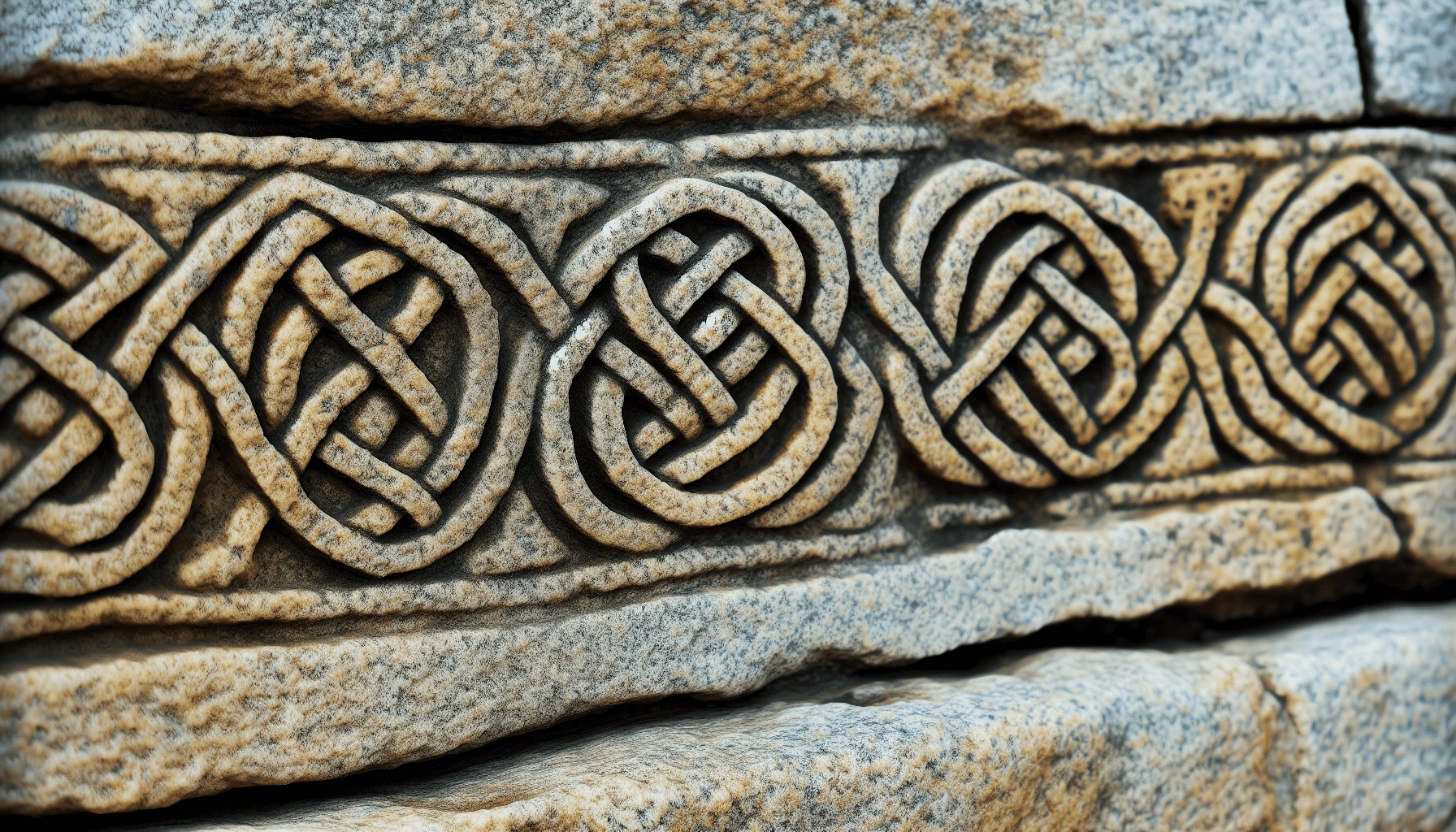
The Trinity Knot’s presence in ancient stone carvings provides a captivating insight into its significance in art history and its lasting appeal across generations. The Trinity Knot has been documented in various forms since the 7th century, appearing on carved stone monuments, woodwork, and jewelry. Its earliest appearance in Scotland and Ireland dates back to the early 7th century when Irish missionaries were evangelizing in Northumberland.
The Trinity Knot’s ancient presence in stone carvings serves as a testament to its enduring symbolism and artistic appeal. From its origins in insular art to its contemporary presence in jewelry, tattoos, and pop culture, the Trinity Knot has captivated the hearts and minds of artists and admirers for centuries, standing as a powerful symbol of eternity, interconnectedness, and spiritual life.
The Golden Age of Celtic Revival: Trinity Knot’s Resurgence
The late-nineteenth-century Celtic Revival, marked by a renewed enthusiasm for Celtic history, languages, and myths, significantly contributed to the Trinity Knot’s modern resurgence. This revival aimed to redefine national identities and safeguard cultural heritage, leading to a renewed interest in ancient symbols like the Trinity Knot. Its resurgence in modern times is not only limited to Ireland but has extended to North America and other parts of the world, where it has become a celebrated emblem of Celtic pride and heritage.
The Trinity Knot’s resurgence in modern times is a testament to its timeless appeal and the enduring connection between generations and cultural heritage. As a symbol of eternity and everlasting love, the Trinity Knot continues to captivate and inspire, serving as a powerful reminder of the spiritual bond we share with one another and our shared history.
The Trinity Knot as a Love Token: Romantic Connotations
The romantic symbolism of the Trinity Knot makes it a favoured choice for those desiring a symbol of everlasting love and commitment. Its continuous, interwoven design serves as a powerful reminder of the unending bond between two people, transcending temporal boundaries and symbolizing the unity of their love in the past, present, and future.
In traditional Celtic weddings, the Celtic Love Knot, also known as the Trinity Knot, is often used to represent eternity, interconnectedness, and the three essential qualities of marriage: love, protection, and honor. Whether it is incorporated into engagement rings, wedding bands, or other tokens of affection, the Trinity Knot is an exquisite symbol of eternal love and commitment, cherished by couples across generations and cultural backgrounds.
Summary
In conclusion, the Trinity Knot’s rich history, profound symbolism, and captivating design have made it an enduring emblem across cultures and generations. From its ancient origins and spiritual dimensions to its presence in modern culture, fashion, and personal identity, the Trinity Knot serves as a timeless reminder of the interconnectedness of all things and the eternal bond we share with one another. Embraced by countless people worldwide, the Trinity Knot continues to inspire and captivate, standing as a powerful symbol of unity, eternity, and love.
Frequently Asked Questions
What does the Trinity knot symbolize?
The Trinity knot symbolizes the Father, Son and Holy Spirit, as well as the three stages of life and the Maiden, Mother and Crone. It is a powerful symbol of the generations of a family.
What does the triquetra protection mean?
The Triquetra, or triple knot, is a symbol of protection believed to create an unbreakable circle. It reflects the interconnectedness of the physical, mental and spiritual and has its roots in Pagan tradition as a symbol of Odin and the mother goddess.
What is the symbol of the Holy Trinity?
The symbol of the Holy Trinity is often represented by an equilateral triangle, or three joined circles, to represent one God in three Persons.
How is the Trinity Knot used in modern culture?
The Trinity Knot is commonly used in modern culture, found in tattoos, jewelry, and pop culture as a symbol of identity, beliefs, and artistic expression.
What is the significance of enclosing the Trinity Knot within a circle or other shapes?
Enclosing the Trinity Knot within a circle or other shapes emphasizes its symbolic meanings of unity and eternity, symbolizing interconnectedness and the eternal cycle of life.

